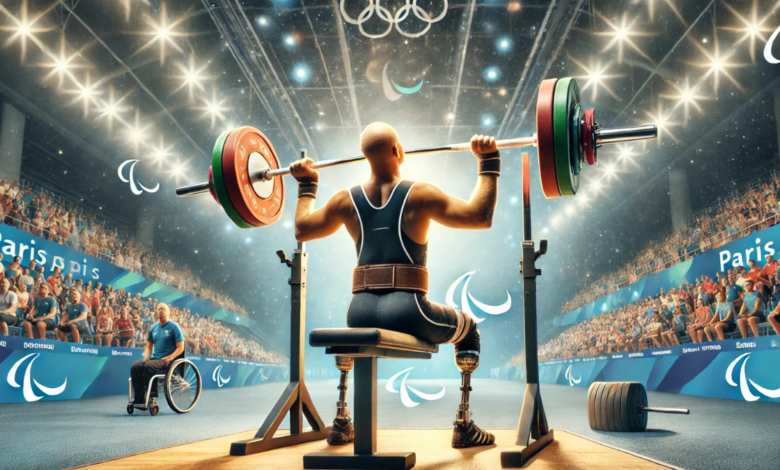Powerlifting at the Powerlifting Paralympics 2024: Breaking Barriers

The Powerlifting Paralympics 2024 Games, a global celebration of athleticism, resilience, and human spirit, showcase the extraordinary abilities of athletes with disabilities. One of the most exciting events is Paralympic powerlifting, a sport that tests strength, endurance, and determination in ways that leave spectators in awe. As we approach the Powerlifting Paralympics 2024 Games, which will be held in Paris, powerlifting promises to be a highlight, with athletes aiming to break records and defy expectations. This article dives into Paralympic powerlifting, exploring its history, the rules, training practices, notable athletes, and what we can expect from the 2024 competition.
History of Powerlifting in the Paralympics
Powerlifting Paralympics 2024 powerlifting debuted in the 1960 Rome Paralympic Games, marking the inclusion of strength-based competition for athletes with disabilities. Initially, the sport was contested by athletes with spinal cord injuries, but as the Powerlifting Paralympics 2024 evolved, powerlifting became an event open to a wider range of disabilities. This inclusivity reflects the broader growth of adaptive sports, where athletes with various physical challenges can compete on an equal footing.
Over the years, Powerlifting Paralympics 2024 powerlifting has become more organized and professional, with specific rules designed to ensure fair competition. One of the significant milestones came in 1992 when the International Paralympic Committee (IPC) formally recognized powerlifting as an official Paralympic sport. Since then, the event has gained considerable popularity, drawing massive crowds and media attention at each successive Games.
Powerlifting in the Paralympics has also witnessed several groundbreaking performances, with athletes pushing the boundaries of human strength and endurance. The sport’s continued growth reflects the broader movement toward greater recognition and inclusion for people with disabilities in athletics.
Key Rules and Regulations of Powerlifting in the Paralympics
Powerlifting Paralympics 2024 powerlifting follows specific rules that ensure a fair and competitive environment for all athletes. The competition involves athletes attempting to lift a barbell loaded with weight from a prone position on a bench. The sport is governed by the rules set forth by the International Paralympic Committee (IPC) and the International Powerlifting Federation (IPF).
The classification system is one of the key aspects of the sport, designed to level the playing field for athletes with different types and degrees of disability. Athletes are classified into various categories based on their physical abilities, allowing those with similar disabilities to compete against each other. This system ensures that strength and technique are the determining factors in success rather than the athlete’s level of impairment.
The competition format involves three attempts per athlete to lift the maximum weight possible. The best lift out of these three is recorded as the athlete’s score. To be valid, each lift must follow strict criteria: the barbell must be lowered to the chest, held steady, and then pressed upwards in a smooth, controlled motion. Lifts that don’t meet these criteria are disqualified, ensuring that only the most technically proficient and powerful athletes succeed.
Preparation for Paralympic Powerlifting: Training and Adaptations
Training for Paralympic powerlifting is an intensive and highly specialized process involving a combination of strength-building exercises, technique refinement, and mental conditioning. Since athletes have diverse physical challenges, training programs must be customized to suit their needs and abilities; a typical training regime might include exercises to build upper body strength, enhance core stability, and improve overall power.
One of the unique aspects of training for Paralympic powerlifting is the adaptability of the equipment. Athletes may use specialized benches that accommodate their particular disability, such as benches that can be adjusted to different angles or provide additional support for athletes with spinal injuries. Additionally, custom-designed lifting devices, such as supportive straps or devices that assist with grip, can help athletes perform to their maximum potential.
Another essential component of preparation is mental conditioning. Powerlifting, especially at the Paralympic level, is a test of physical strength and mental fortitude. Athletes must develop a mindset of resilience, focus, and determination to overcome the challenges they face in training and competition. Many athletes work with sports psychologists to improve their mental toughness, helping them perform under the immense pressure of international competition.
The Athletes: Notable Paralympic Powerlifters to Watch in 2024

As the 2024 Paralympic Games in Paris draw nearer, there is no shortage of incredible athletes expected to make waves in the powerlifting events. These athletes have demonstrated exceptional strength, perseverance, and determination to overcome physical and personal obstacles.
One such athlete is China’s Liu Lei, a powerlifting champion who consistently sets world records. Known for his remarkable strength and precision, Liu is a favorite heading into Paris 2024, with fans eager to see if he can defend his title. Another notable figure is Noura Al Matroushi from the UAE, who has made significant strides in the sport and is poised to challenge the competition in her category.
The inspiring stories of these athletes transcend the sport itself. Many of them have overcome serious injuries, health conditions, or societal barriers to reach the pinnacle of their discipline. Their success is a powerful reminder of the boundless potential of athletes with disabilities, showing the world that the mind only defines limits.
Powerlifting at the 2024 Paralympics: Expectations and Innovations
The 2024 Paralympic Games are expected to showcase significant advancements in the technology and structure of Paralympic powerlifting. With innovations in adaptive equipment, such as more advanced lifting platforms and personalized benches, athletes can access the most cutting-edge technology to help them perform at their best.
The competition format will also likely undergo some refinements, with a more streamlined and efficient structure that ensures fair competition across various disability classifications. These changes will not only improve the experience for athletes but also enhance the spectator experience, making the sport more accessible and engaging for audiences around the world.
Furthermore, the role of media coverage and sponsorship is set to increase, with powerlifting gaining more attention and visibility than ever before. The increased focus on adaptive sports is helping to break down stereotypes and promote greater inclusivity in athletics, highlighting the determination and skill of Paralympic athletes. This broader recognition will inspire the next generation of athletes to pursue their dreams and push the boundaries of what’s possible.
Conclusion
Paralympic powerlifting is more than just a sport; it’s a testament to the incredible resilience and determination of athletes who refuse to let anything stand in the way of their dreams. As we look forward to the 2024 Paralympic Games in Paris, the powerlifting competition promises to be a thrilling showcase of strength, skill, and perseverance. With groundbreaking performances expected and innovations in training and competition formats, the sport continues to evolve, inspiring millions worldwide.
By supporting these athletes and promoting inclusivity in sports, we can ensure that future Paralympic powerlifting events continue to break barriers and inspire new generations of athletes to achieve greatness.
FAQs
- What is Paralympic powerlifting?
- Paralympic powerlifting is a strength sport where athletes with disabilities compete to lift a barbell loaded with weight. The competition is based on the athlete’s ability to lift the heaviest weight in a controlled manner.
- How are Paralympic powerlifters classified?
- Athletes are classified based on their type and degree of disability, ensuring that those with similar physical challenges compete against each other.
- Who are some of the top athletes in Paralympic powerlifting for 2024?
- Notable athletes to watch in 2024 include Liu Lei from China and Noura Al Matroushi from the UAE, who have excelled in the sport.
- What are the main differences between Paralympic powerlifting and regular powerlifting?
- The primary difference is the classification system, where athletes with varying disabilities are grouped to ensure fairness in competition.
- What challenges do Paralympic powerlifters face in training?
- Paralympic powerlifters face challenges such as adapting equipment to their needs, overcoming physical limitations, and maintaining mental focus and resilience.
You May Also Read: https://latestcryptonewz.com/


